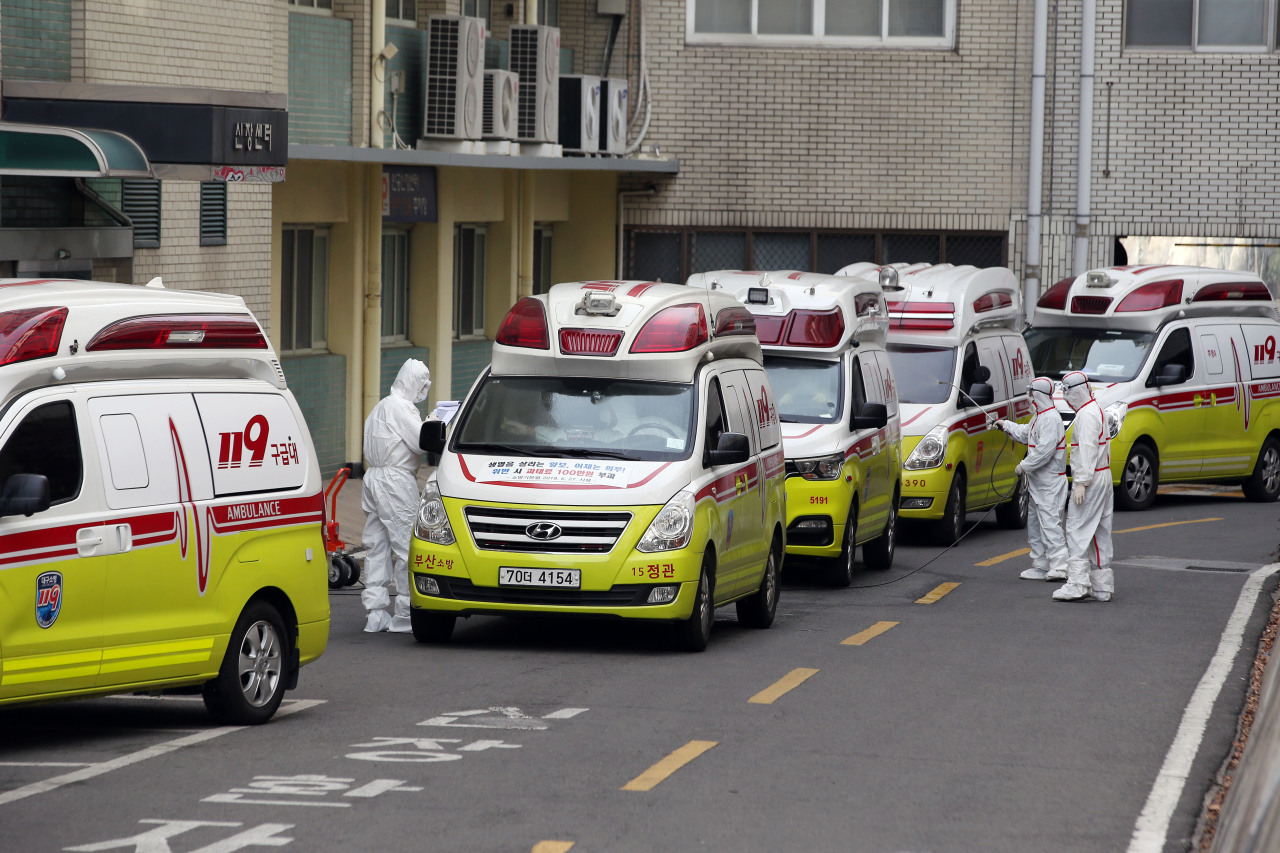[Newsmaker] COVID-19 makes case for universal health care
By Kim ArinPublished : April 8, 2020 - 18:36

Easy access to health services is helping South Korea better navigate through the novel coronavirus crisis, experts suggest.
More hospital beds mean more patients will likely recover from COVID-19, says preventive medicine professor Shin Ae-sun of Seoul National University College of Medicine.
In a recent analysis of Organization for Economic Cooperation and Development member states with over 3,000 confirmed virus cases, those with greater hospital bed capacity tended to have a higher recovery rate, she said.
“But in order for this correlation to hold more credibility, it has to be studied over time as countries are at varying stages of the outbreak,” she said. “Which may be why countries hit earlier appear to be faring better by comparison.”
According to the Health Ministry’s 2019 data, Koreans visited hospitals 16.6 times a year on average in 2017, a figure exceeding that of any other country in the OECD.
Korea’s density of hospital beds was also 2.6 times the OECD average at 12.3 beds per 1,000 people.
“The threshold for hospitalization is quite low in Korea. Seoul has relatively more hospitals than other major cities elsewhere,” said Kim Tae-hyong, an infectious disease specialist at Soonchunhyang University Hospital in central Seoul.
“What has been a surplus under normal circumstances is proving to be valuable in an emergency.”
Shin Jeong-woo, a health policy researcher at the Korea Institute for Health and Social Affairs, said Korea was among the few countries where health coverage is universally achieved through a single social insurance program.
All Korean citizens are covered under the National Health Insurance.
“Medical services are made affordable through the state insurance service and their quality is controlled by the private health sector,” he said. “It is a rare example of a public-private partnership enabled through a successful governance.”
But the wide accessibility comes at the price of heavy physician workload.
Despite the higher availability of beds, Korea has the lowest doctor-patient ratio, at 2.3 physicians per 1,000 inhabitants.
Overwork among health professionals is a chronic problem here, according to Lee Kyu-sik, president of the Korea Institute for Health and Welfare Policy.
“Korea’s model of universal coverage may be admirable, but more beds and fewer doctors mean doctors are having to work in excess,” he said. “Physician burnout has existed long before COVID-19.”
Korean hospitals are used to operating under a strained workforce, according to Lee.
“Because medical bills are low-priced, hospitals resort to receiving more patients to cover the costs.”
Shin of the health and social affairs institute said, “Korea’s health system is supply-based rather need-based, meaning service is provided to anyone who wants it rather than who actually needs it.
“While its affordability and accessibility are helping in a time of emergency, whether it is cost-effective is a separate discussion.”
By Kim Arin (arin@heraldcorp.com)









![[Kim Seong-kon] Democracy and the future of South Korea](http://res.heraldm.com/phpwas/restmb_idxmake.php?idx=644&simg=/content/image/2024/04/16/20240416050802_0.jpg&u=)








![[KH Explains] Hyundai's full hybrid edge to pay off amid slow transition to pure EVs](http://res.heraldm.com/phpwas/restmb_idxmake.php?idx=652&simg=/content/image/2024/04/18/20240418050645_0.jpg&u=20240418181020)

![[Today’s K-pop] Zico drops snippet of collaboration with Jennie](http://res.heraldm.com/phpwas/restmb_idxmake.php?idx=642&simg=/content/image/2024/04/18/20240418050702_0.jpg&u=)